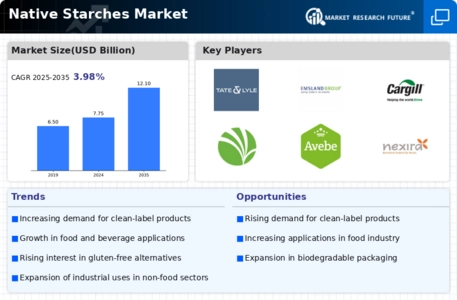The Native Starches Market has witnessed significant developments and competitive dynamics in recent years, driven by the increasing demand for natural and clean-label products across various industries, such as food and beverage, pharmaceuticals, and
. The market comprises numerous key players that are focusing on innovation, product diversification, and strategic partnerships to enhance their market positions. The competition is characterized by a mix of and regional manufacturers that leverage technology advancements and sustainable practices to meet the evolving demands of consumers.
Factors such as cost-effectiveness, product quality, and supply chain efficiency are crucial in this market landscape, influencing the competitive strategies of companies aiming to establish a strong foothold in the native starch industry.Tate and Lyle has solidified its presence in the Native Starches Market through its commitment to high-quality products and extensive research and development initiatives. The company is recognized for its innovative approach to starch production and offers a variety of native starches tailored to meet the specific needs of different applications, including thickening agents, gelling agents, and stabilizers.
By leveraging its strong R&D capabilities and technical expertise, Tate and Lyle consistently develop new starch solutions that cater to evolving market trends, enhancing its reputation as a leader in the sector. Additionally, the company emphasizes sustainability in its operations, aligning with consumer preferences for environmentally friendly products, which further strengthens its competitive edge.KMC Ingredients plays a pivotal role in the Native Starches Market by offering a diverse range of native starch products that cater to various sectors such as food, industrial, and dietary applications.
Known for its focus on quality and functionality, KMC Ingredients provides tailored solutions that address the specific requirements of its customers. The company places a strong emphasis on sustainability and resource management, ensuring its production processes are environmentally responsible. KMC Ingredients continually invests in innovation to enhance its offerings and improve product efficiency, thereby establishing a solid market presence. Through strategic collaborations and a commitment to customer satisfaction, KMC Ingredients effectively navigates the competitive landscape of the native starch market, making it a key player in addressing both industry challenges and consumer demands.




















Leave a Comment